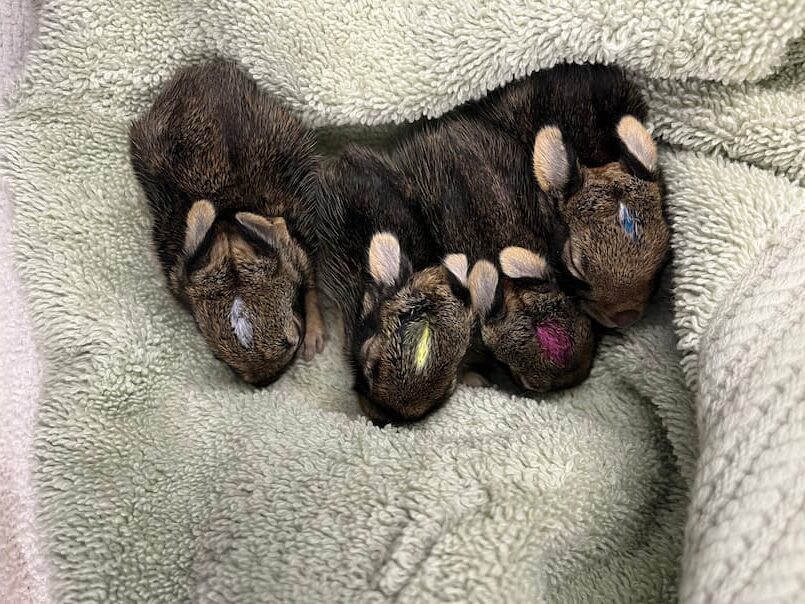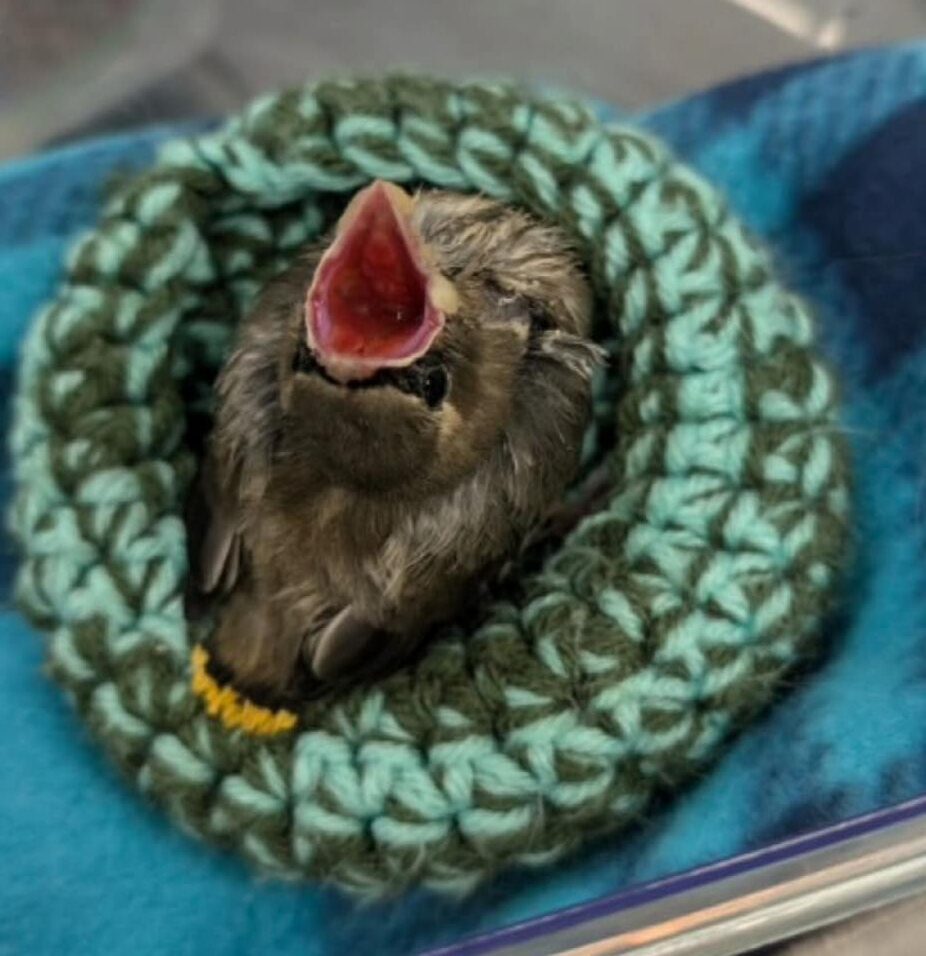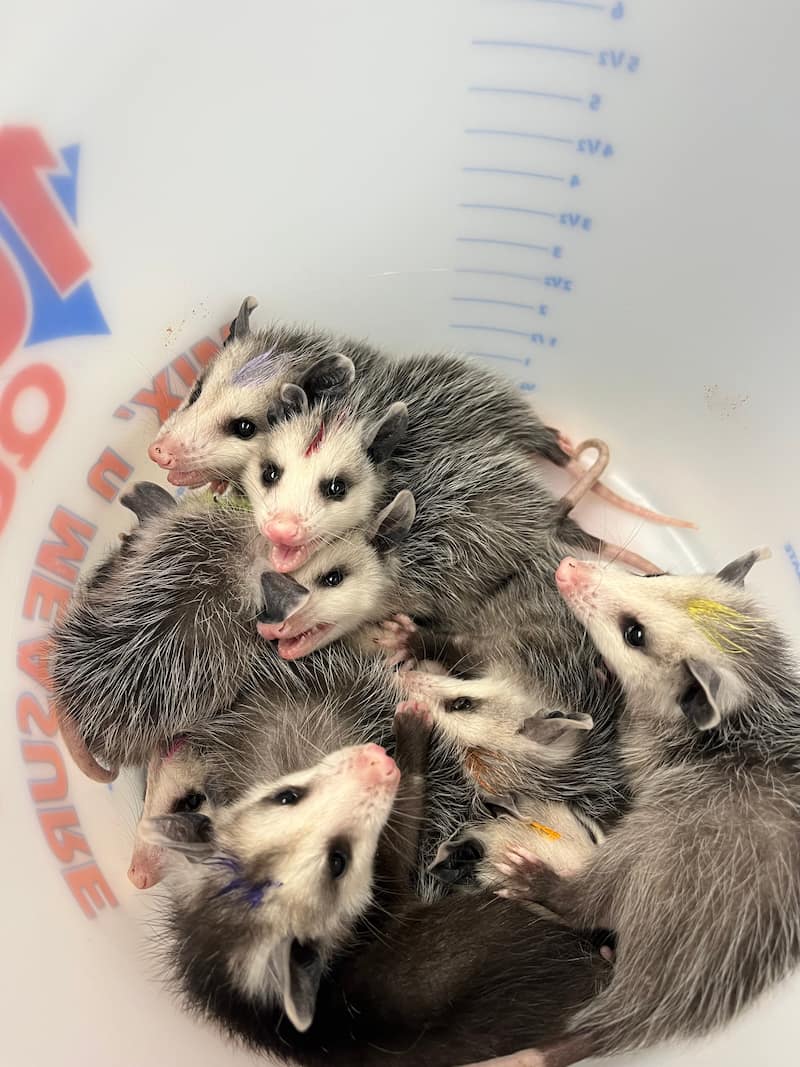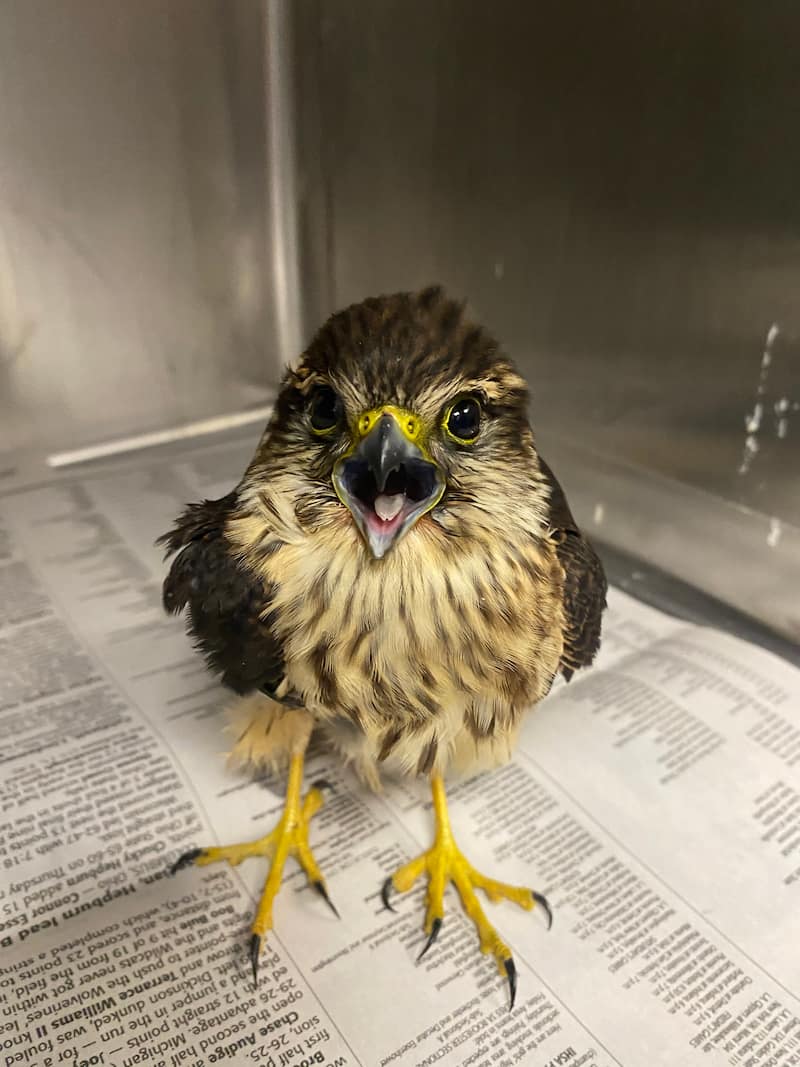Here at the Wildlife Medical Clinic, it’s that time of year when we are inundated with baby wildlife. From American Robins to White-tailed Deer, we see a variety of babies throughout the breeding seasons and our volunteers are trained to care for them all!

Not only do many young animals look different from their adult counterparts, but they also have different requirements that we must meet to care for them. Young animals have much higher metabolisms than they do as adults, so they must eat more frequently. Newly hatched American Crows must be fed every 30 minutes by both parents to nourish their ever-growing bodies. Some animals however, like the Eastern Cottontail, have a different strategy where they feed their babies two big meals at dawn and dusk so that mom can go out and graze on grass and other plants during the day.
Young mammals start out life only able to digest the milk that their moms feed them. In the clinic, we have specialized formulas to closely match those milks so that the orphans in our care receive the proper nutrition. Considering how much liquid they consume, it is no wonder that baby animals are roughly 80% water, compared to 60% in adults. This means that baby mammals are at greater risk of dehydration when they go for long periods without being fed by their mom, especially if they are out in the summer sun. Our volunteers have specific treatments they can give to orphaned wildlife that allows them to safely rehydrate them.

As the weeks pass, the baby animals get older and start wandering out on their own, under the supervision of their parents of course. Many young birds start to grow their flight feathers and look all disheveled as they are readying to fledge or leave the nest. These fledglings will explore the ground, start eating insects and other food on their own, attempt some flying, but will still get regular check ins from their parents, who provide them with additional food and support. Once these young birds grow in all their flight feathers and can reliably hunt on their own, their parents will leave them to spread their wings.
While many birds wait for their young to be able to fly before leaving them to their own devices, some mammals like the Common Raccoon may watch after their babies for over 6 months before they let them go off on their own. In that timeframe, the mother raccoon will teach her babies all things raccoon, such as how to hunt, how to interact with other raccoons, how to avoid predators, and much more.
Here at the Wildlife Medical Clinic, we care for sick and injured wildlife across all life stages, from babies to adults. However, with over half of the patients that we see being young animals, it is no surprise that our volunteers love working with the babies!
This article was written by Billy Wright, WMC 3rd year veterinary student volunteer.




